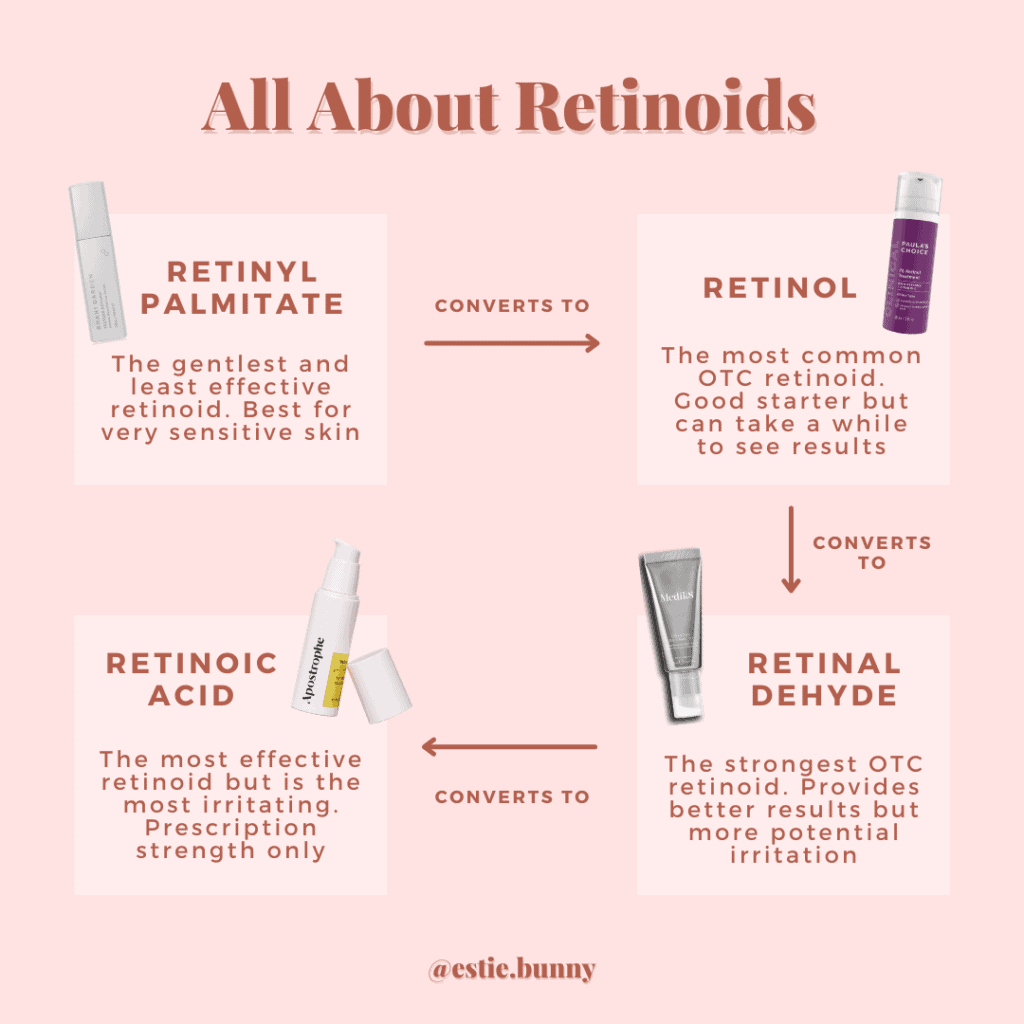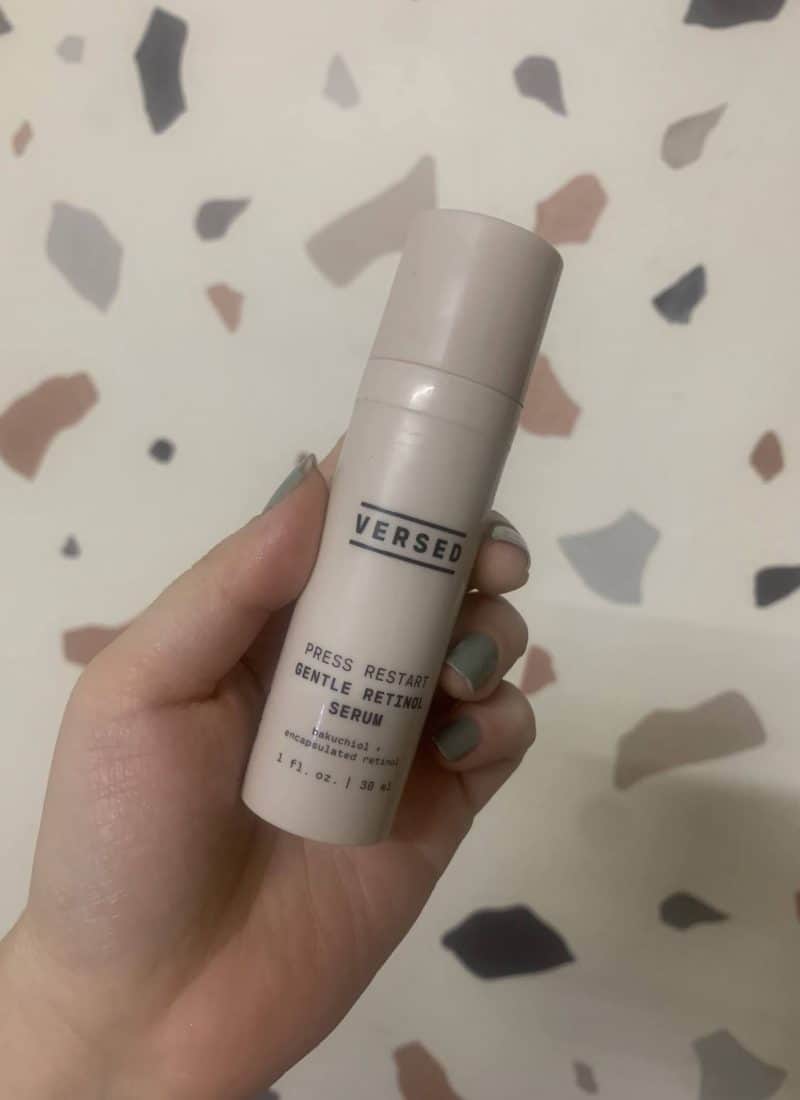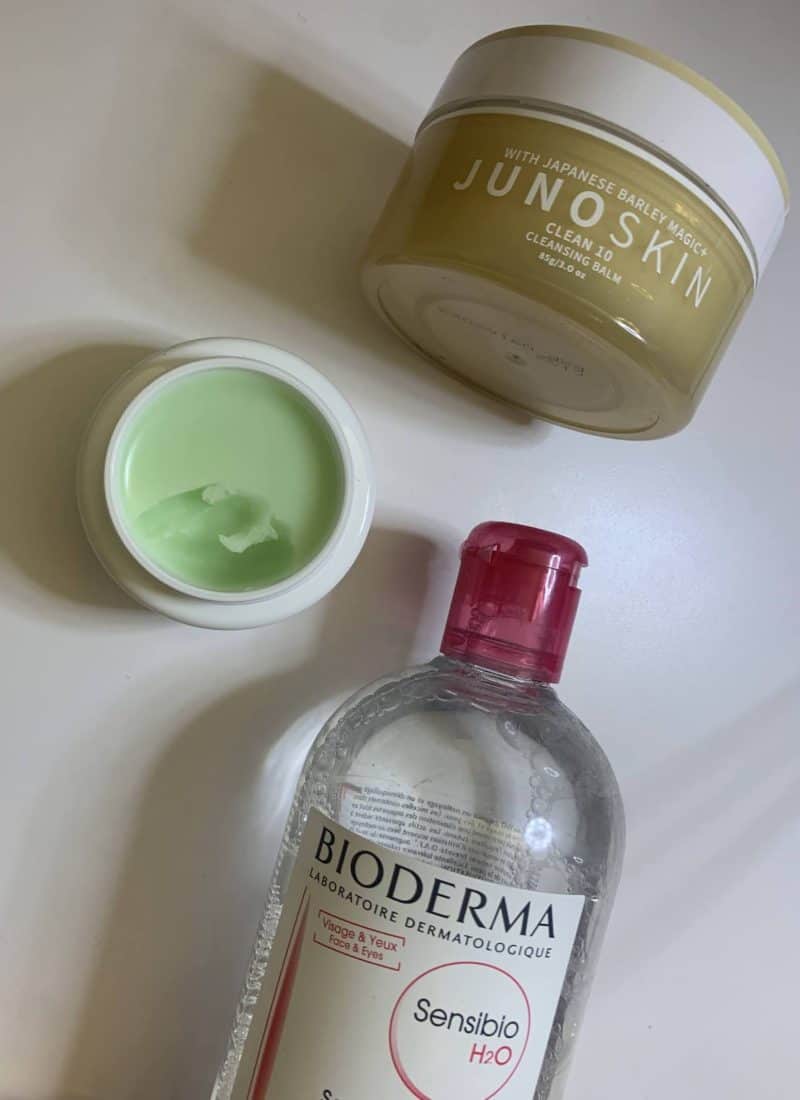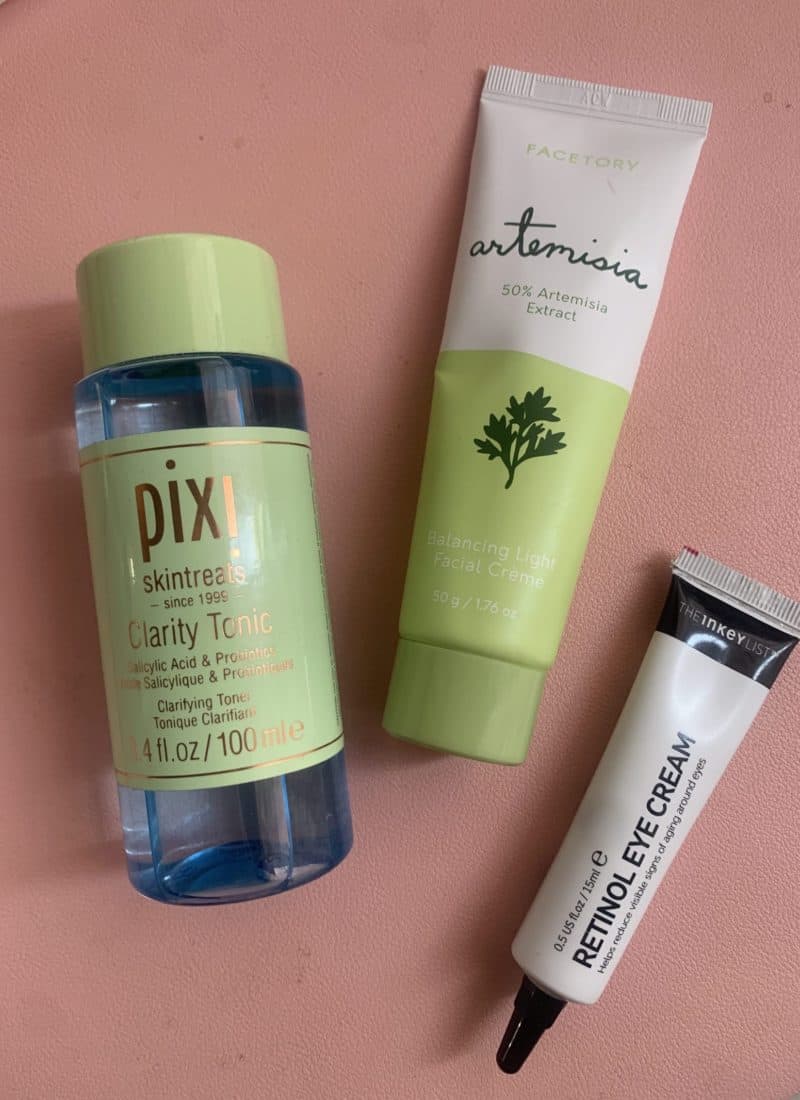So we all know retinoids are known as the “gold-standard” for treating acne, fine lines/wrinkles, and hyperpigmentation. But what’s the difference between retinol vs retinoid? Today I’m breaking down the key differences between each type of retinoid (hint: there’s more types than you think!). Retinoids are vitamin A derivatives that are often used to treat skin concerns like signs of aging and breakouts. Here’s a little chart I put together about the four main types of retinoids:

1. Retinoid Esters
The most popular retinoid ester is retinyl palmitate. Retinoid esters are the gentlest but least effective of the retinoids. They take three conversions to become retinoic acid, which is the active form of vitamin a. Retinyl palmitate is often used as a preservative or penetration enhancer, so it’s not always used as a true retinoid. There isn’t a ton of research in terms of how effective retinoid esters are for treating concerns like signs of aging and acne. However, if your skin can’t tolerate retinol, retinyl palmitate could be worth trying out!
Product Recommendation: Shani Darden Texture Reform
2. Retinol
Retinol is one of the most widely available retinoids on the market. It’s the retinoid that’s used most frequently in over-the-counter products. Retinol takes two conversions to become retinoic acid, so it’s a bit stronger than retinoid esters, but still much weaker than prescription-strength retinoids. Retinol products are a great way to start out on retinoids because there are so many options varying in price, strength, and format. If you’re looking for a convenient retinoid product to help with preventative signs of aging, retinol could be a good fit for you!
Product recommendations: Stratia Night Shift (cream/moisturizer format), Versed Press Restart Retinol Serum (great beginner option), Paula’s Choice 1% Retinol Treatment (stronger option)
3. Retinaldehyde
The strongest over-the-counter retinoid option. Retinaldehyde takes one conversion to become retinoic acid, so it’s stronger than retinol, but can also be more irritating. Retinal isn’t used super commonly in the industry, but could be a good option if retinol isn’t giving you good enough results. It’s not as strong as prescription-strength retinoids, but it’s a good in between if you’re looking to up your retinoid game. I’ve also seen retinal used in spot treatments as well!
Product recommendations: Medik8 Crystal Retinal, Kinship Pimple Potion
4. Prescription-Strength Retinoids
Prescription-strength retinoids are extremely well studied when it comes to treating acne and signs of aging. They are the strongest of the retinoids and don’t need to convert to be active on the skin. Prescription retinoids are the most effective, but also the most irritating. Many people experience redness, peeling, and irritation when starting out, but starting slow can go a long way. Your skin may take time to adjust, but being kind and gentle with your skin is crucial. There a few different prescription-strength retinoids:
Adapalene
Adapalene is currently the only prescription-strength retinoid you can purchase over the counter in the US. The most popular adapalene product is Differin Gel, but La Roche-Posay and Proactiv both have options. Adapalene is a great, affordable retinoid for treating acne and breakouts, but isn’t the most effective for signs of aging. If you’re dealing with breakouts, adapalene is a convenient, accessible option!
Tretinoin/Retin-A
Tretinoin is the most popular of the prescription-strength retinoids. It’s widely recommended by dermatologists to treat acne, signs of aging, and hyperpigmentation. It can be pretty strong for some, so remember to start slowly! I personally use tretinoin and I’ve seen amazing results in overall skin texture and tone. I use mine 3-4 nights a week, but it’s all about your derm’s recommendation and your tolerance.
Tazarotene/Tazorac
Tazarotene is the strongest of the prescription-strength retinoids, but it can be very irritating on the skin. It is stronger than tretinoin, but it’s really only recommended to people who have no dryness or sensitivity. As always with prescription treatments, consult with your dermatologist and be sure to follow their instructions!
Retinol vs Retinoid – Which should you use?
As mentioned earlier, retinol is a very gentle retinoid that is a great place to start. There’s a wide array of retinol products and they’re great for preventative anti-aging. However, they’re not the most effective in treating acne, especially in more severe cases. If you’re looking for a simple product to help prevent signs of aging, retinol is a great place to start.
Prescription-strength retinoids are the gold standard for a reason! They treat acne, signs of aging, hyperpigmentation and more. If you have access to prescription-strength retinoids and your skin can tolerate them, that’s what my recommendation would be! It’s all based on your skin’s tolerance and your accessibility. I personally started with an over-the-counter retinol (Versed) and have since started tretinoin*. I get mine through my job.
When it comes to deciding between retinol vs retinoid, you can’t go wrong with any of these. It’s really all about finding the best fit for you and your skin. I don’t think there’s anything wrong with starting with a retinoid ester or retinol and seeing how it works for your skin. You can always work your way up to increase your skin’s tolerance to retinoids!
Certain product links are affiliate links. I do earn a small commission if you purchase from these links (with no additional cost to you), which supports me and my blog. Feel free to check out all of my affiliate/referral links if you decide to shop. Thank you for your support!




This was so helpful! I have only used gentle retinols, but want to work my way up to something stronger over time. Right now I am loving the Dr. Dennis Gross Ferulic + Retinol serum because it does not irritate my skin.
I’m so glad it was helpful!! I think starting gentle is the best way and building up strength as your skin tolerates it 🙂